I founded Manoir after living in London and seeing so many beautiful examples of design inspired by global influences. Whether drawn from France or the European continent or from Asia or the Middle East, the little touches we incorporate into our décor often reflect our own unique story and our connection to these places and cultures. I enjoy collecting small treasures when I travel – they warm a space and bring back wonderful memories while paying tribute to global artisans who pass down their craft from generation to generation. While it’s not always easy to bring back larger pieces, that’s where Manoir comes in! These days when I travel, I enjoy looking for inspiration to share via Manoir – whether it’s recreating that French Provencal sofa I saw in a market or the drop-dead gorgeous ginger jar at a London antiques fair.
 Ginger Jar inspiration from London
Ginger Jar inspiration from London
My most recent travels brought me to Marrakech, Morocco, where I was delighted to wander the souk and discover artisans working in hidden passageways, handcrafting exquisite objects in iron, wood and leather - a veritable feast for the eyes. Indeed, much of Morocco’s rich, traditional designs have a timeless aesthetic that has been embraced by interior designers around the world.
 A feast for the eyes
A feast for the eyes
 An artisan at work
An artisan at work
Characterized by vibrant colors, intricate patterns and motifs, traditional Moroccan design can easily be incorporated into a modern interior, adding an element of richness associated with its vibrant culture.
 Vibrant colors, intricate patterns and motifs
Vibrant colors, intricate patterns and motifs
The most iconic element of Moroccan design is the use of vivid hues such as red, yellow and blue. These colors are often combined with bold geometric shapes like diamonds or stars for an eye-catching effect – as seen prominently in the renown Moroccan tiles. Throughout Marrakech, I found exquisite examples of hand-painted tiles from the tradition of Moorish design, with its roots in Spain and North Africa, dating back to around 700 A.D. Traditional Moorish tiles can be used as beautiful backdrop to furniture pieces and accessories in today’s interiors – to stunning effect.
 Moorish tiles used as beautiful backdrop in today's interiors
Moorish tiles used as beautiful backdrop in today's interiors
Throughout Marrakech, the Moorish influence is seen everywhere – in the shape and design of the doors fronting homes, mosques, palaces and riads to gardens and courtyards with intricate tilework and elaborately carved arches.
 Moorish style arches
Moorish style arches
 A Moroccan door with arches and intricate carving
A Moroccan door with arches and intricate carving
 Moorish influences: tiles and intricate carvings
Moorish influences: tiles and intricate carvings
 Moorish influences: exquisite tilework and carving
Moorish influences: exquisite tilework and carving
Textiles also play an important role in traditional Moroccan design. Richly patterned rugs made from wool or cotton are often used on floors and walls for warmth and texture while woven baskets filled with colorful fabrics create visual interest when grouped together in various sizes.
 Textiles play an important role in traditional Moroccan design
Textiles play an important role in traditional Moroccan design Colorful woven baskets
Colorful woven baskets Colorful woven baskets
Colorful woven baskets
Wandering through the medina, I met some wonderful textile artisans. In a carpet collective I visited, the women are the artists, weaving by hand a carpet that can take six months to complete.
 A woman weaver works her loom
A woman weaver works her loom
Each pattern originates from a particular Berber tribe and certain styles, such as the simple geometric Beni Ourain, have become insanely popular with designers globally. Other styles have timeless appeal, like the flat weave Kilim rugs of nomadic tribes that are lightweight and easily transportable.
 The simple geometric Beni Ourain design, a designer favorite
The simple geometric Beni Ourain design, a designer favorite
 Timeless appeal: the flat weave Kilim rugs of nomadic tribes
Timeless appeal: the flat weave Kilim rugs of nomadic tribes
When it comes to furniture pieces, wood is typically used as the main material due to its durability and versatility. The addition of carved details or ornate metalwork having become popular over time.
 Carved wood furniture
Carved wood furniture
Today’s modern interiors have adopted many elements from traditional Moroccan style including bright textiles, intricate tile work, decorative wooden furniture pieces and even accents such as poufs or lanterns.
 A modern interior with Moroccan textiles pouf and lantern
A modern interior with Moroccan textiles pouf and lantern
In my treasure seeking in Marrakech, I was inspired by the many ways to incorporate North African charm to an interior. I look forward to evoking Morocco’s rich design heritage in future pieces that can help bring a unique touch to your interiors!
